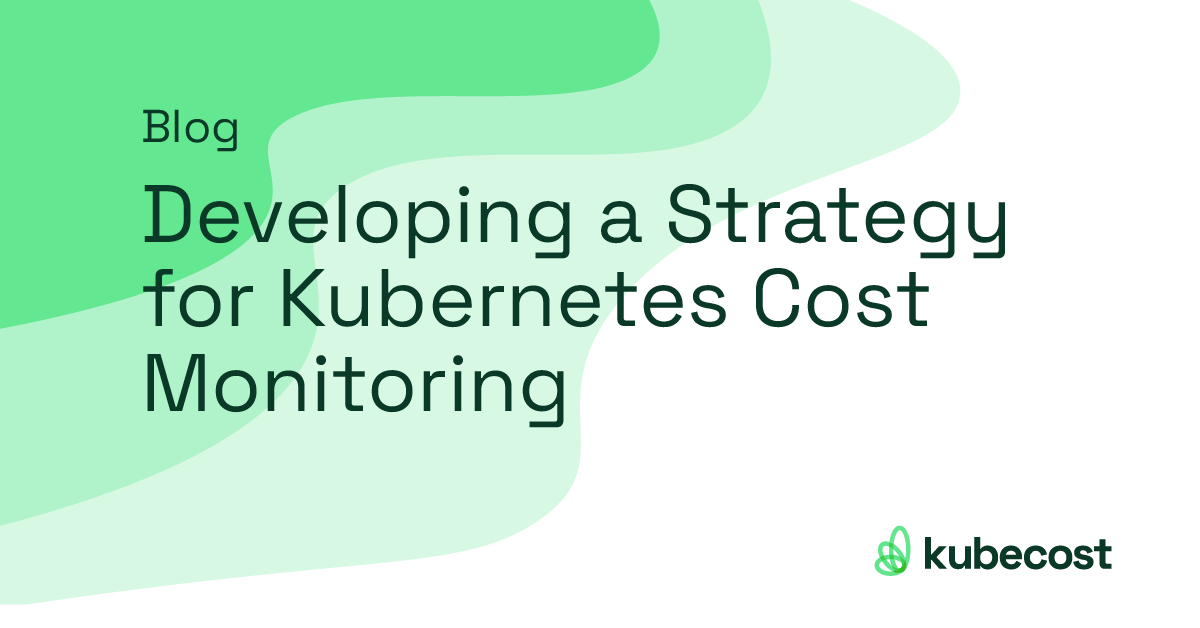Developing a Strategy for Kubernetes Cost Monitoring

Intro
As businesses accelerate their digital transformation efforts, cloud computing has become an essential part of their IT infrastructure strategies. The continued growth in cloud adoption, cloud-native development, and containerized software deployment is also fueling the popularity of Kubernetes and driving up associated cloud costs.
A Red Hat survey revealed that 70% of IT leaders reported their organizations are using Kubernetes, with one-third planning significant increases in their container usage.
As the standard for container orchestration, Kubernetes plays a crucial role in cloud-native development. As a result, Kubernetes costs are rising sharply as IT organizations implement more Kubernetes clusters each year. According to the Cloud Native Computing Foundation, nearly 49% of organizations report higher costs associated with using Kubernetes. While expanded adoption contributes to the increase, the same survey found that 79% of organizations either do not monitor Kubernetes costs or rely on monthly estimates.
Monitoring Kubernetes costs is a complex challenge for DevOps teams, particularly when organizations use multiple cloud environments and providers. With distributed systems and shared resources, tracking costs becomes a daunting task. Organizations must implement a robust cost management strategy for Kubernetes to accurately manage, forecast, and optimize costs.
Key challenges with Kubernetes costs
Complexity and lack of visibility are key challenges when it comes to monitoring Kubernetes resources. The distributed nature of a Kubernetes environment, with its clusters and shared resources, makes it difficult to break down costs accurately.
As the FinOps Foundation notes, “Allocating costs in a container environment surfaces additional challenges compared to traditional cloud environments.” When resources are shared, understanding and appropriately delineating cost allocation becomes complex. There is often a lack of visibility into critical areas, including cost centers.
Meanwhile, costs can spiral quickly when self-service deployment features are involved. Developers are often unaware of how costs can add up rapidly. A recent report observed, “Self-service access to Kubernetes environments may result in development teams spinning up an excessive number of Kubernetes clusters.” Developers may not fully realize the extent of the costs involved.
Monitoring the cost of a Kubernetes workload is another complex process. It involves multiple steps, from assigning hourly operating costs of each Kubernetes cluster to tracking and allocating usage by cluster tenant.
Organizations must consider a multi-faceted strategy to optimize Kubernetes cost monitoring for optimal results.
Three key steps to devising a Kubernetes cost monitoring strategy
1. Aim to create a culture of collaboration between departments
Accurate Kubernetes cost monitoring requires collaboration and cooperation across the entire organization. Developers, FinOps teams, engineers, and C-suite executives all need to be aligned for the strategy to succeed.
For example, developers can be encouraged to take ownership of their data, gaining greater visibility into their own usage and costs. Individual departments must develop a deeper understanding of how costs break down across multiple clusters and nodes.
By promoting a culture of cross-functional collaboration, organizations can establish a cohesive approach to Kubernetes cost monitoring, ensuring everyone is working towards the same goals.
2. Take a proactive approach to understanding costs
Organizations need to take a proactive approach in developing a comprehensive understanding of Kubernetes costs, including implementing cost governance principles. As Microsoft notes, “Although Kubernetes delivers on the promise of economies of scale and auto-scaling, it requires proper governance and financial transparency for sustained, successful organizational adoption.”
The FinOps approach, which involves collaboration between financial and IT leadership, is crucial for managing Kubernetes costs, especially when an organization is running large-scale kubernetes deployments across multiple or hybrid cloud environments. By being proactive and embracing FinOps principles, organizations can establish a solid foundation for effective Kubernetes cost management.
3. Use automated tools to provide cost visibility and cost optimization
Having accurate visibility into your Kubernetes infrastructure is critical for cost optimization. Cost monitoring requires visibility across multiple environments, applications, microservices and Kubernetes resources.
Trying to calculate costs manually via spreadsheets or similar tools has a number of drawbacks. Manual tracking and calculation methods are not only prohibitively time consuming but are also prone to human error. Spreadsheets are not updated in real-time, failing to reflect current costs or usage accurately. Finally, manual cost tracking is an inherently inefficient process.
Using an automated tool for cost management and monitoring can solve a number of issues regarding Kubernetes. Automated solutions provide the ability to monitor costs in real-time while breaking down expenses by clusters, nodes, services, and namespaces, giving deep visibility into cluster costs. Moreover, an automated cost monitoring tool is more cost-effective than a manual process in the long run.
By leveraging automated tools, organizations can gain the visibility and insights necessary to optimize Kubernetes costs effectively, streamlining the process and minimizing inefficiencies in their cloud spend.
Conclusion
Implementing a robust Kubernetes cost monitoring strategy is crucial for organizations to effectively manage and optimize their cloud-native infrastructure costs. By fostering collaboration, embracing proactive cost governance, and leveraging automated tools, businesses can gain control over their Kubernetes costs, streamline processes, and make informed decisions to ensure long-term sustainability in the ever-evolving cloud computing landscape.
Kubecost is here to help you tackle these challenges, offering real-time visibility and monitoring of Kubernetes costs. Kubecost runs on any Kubernetes environment, including Azure Kubernetes Service (AKS), Google Kubernetes Engine (GKE), Amazon Kubernetes Service (AKS), and on-prem. Get started in minutes, and take control of your cloud costs today.
Connect with us
To learn more, reach out via email (team@kubecost), Slack, or visit our website.